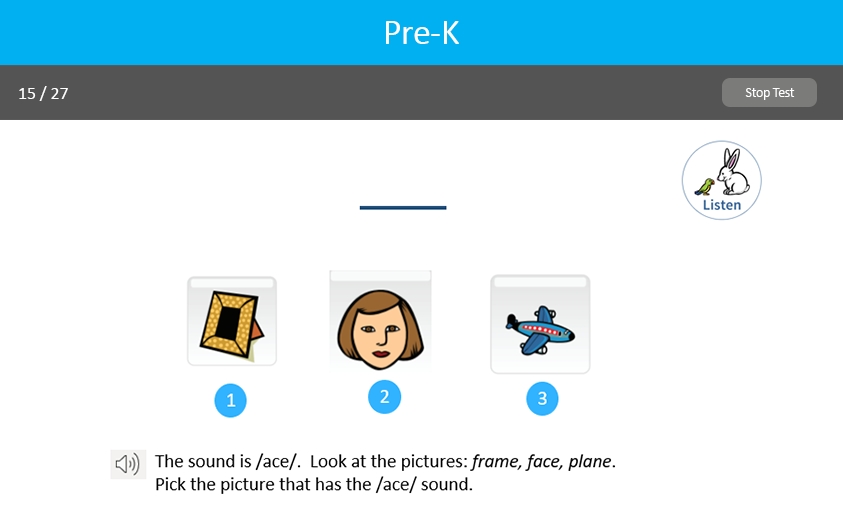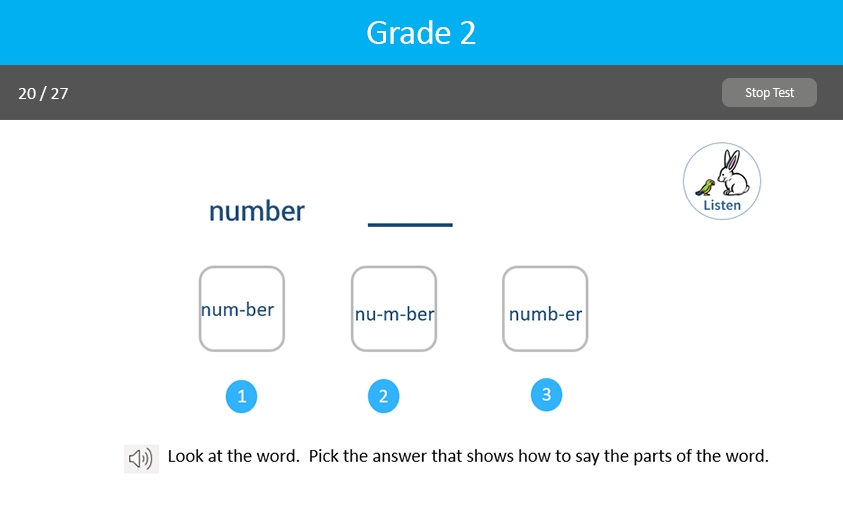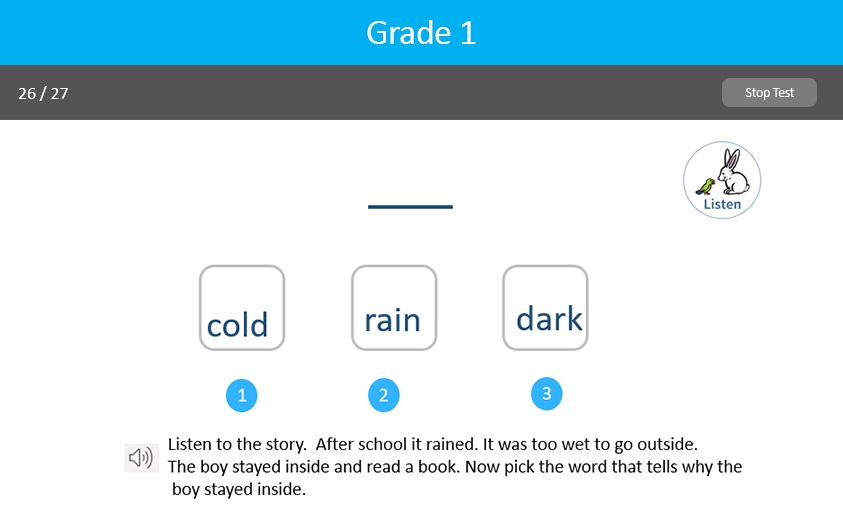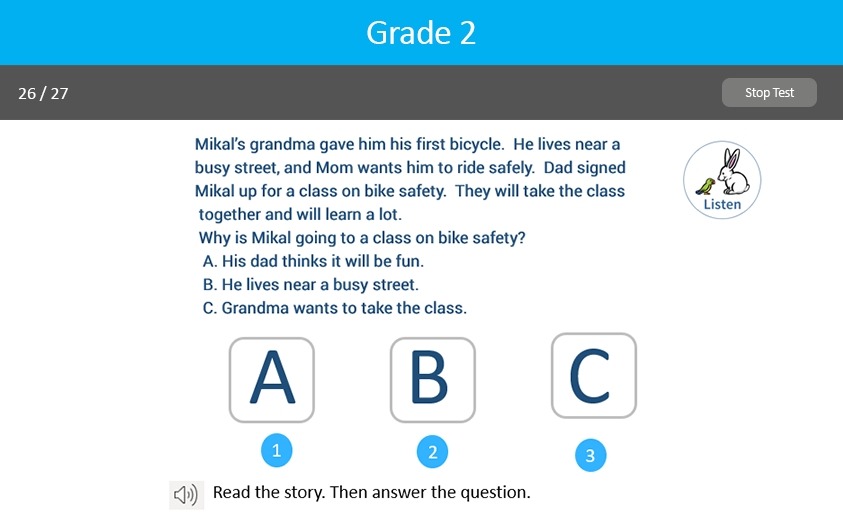Renaissance Star Early Literacy®
Quickly measure K–3 students’ early literacy and early numeracy skills with a computer-adaptive assessment designed just for young learners. For universal screening, progress monitoring, goal setting, and more. Administer in-person or remotely.
AWARD-WINNING ASSESSMENT FOR K–3 LEARNERS
Pre-reader to high-achiever
Give your K–3 students their best start with a literacy and numeracy assessment designed to help you confidently guide every student towards reading proficiency, whether students are learning in-person, remotely, or a combination of both.
Comprehensive and integrated assessments
Star Early Literacy measures both early literacy and early numeracy in a single assessment, providing reliable and valid data about students’ phonological awareness, phonics, word recognition, fluency (including estimated oral reading fluency), and vocabulary as well as early number recognition, counting, and more.
Star Reading integration
When students are ready to transition to independent reading, they can seamlessly move from Star Early Literacy to Star Reading, providing an uninterrupted view of K–12 growth.

Easy administration, easy reporting
Assessment shouldn’t be stressful—for either students or teachers.
Star Early Literacy makes it easy for kids to take tests and easy for educators to get the results.

Short assessments. Timely insights. Fast growth.
Renaissance acts on our ever-growing database of more than 2.7 billion practice and assessment data points to glean new insights and refine our solutions. Learning analytics and advances in learning science give us more precision to enable shorter assessments and continually fine-tune state-specific learning progressions.
THE STUDENT EXPERIENCE
See sample items from Star Early Literacy
Alphabetic Principle, Concept of Word, & Visual Discrimination
Star Early Literacy measures students’ understanding of the alphabetic principle and print concepts, as well as their ability to identify and discriminate between letters (visual discrimination).
See more sample items.
Phonemic Awareness
Students demonstrate their phonemic awareness by rhyming, blending, and segmenting words, word parts, and phonemes; identifying and discriminating between sounds; and manipulating phonemes.
See more sample items.

Phonics
Star Early Literacy measures students’ understanding of sound-symbol correspondence, long and short vowels, beginning and ending consonants, word families (onset and rime), consonant blends and digraphs, and more.
See more sample items.

Structural Analysis & Vocabulary
Students show their word knowledge by matching words to pictures, identifying synonyms and antonyms, categorising words, differentiating multi-meaning words, and analysing word structures such as affixes and suffixes.
See more sample items.
Sentence- & Paragraph-Level Comprehension
Star Early Literacy assesses students’ comprehension of sentences and paragraphs, both orally and through reading. Items also ask students to answer literal or inferential questions about passages.
See more sample items
POWERFUL ASSESSMENT TOOLS
See data on a range of early literacy and numeracy skills
Reading Foundational Skills and Language Assessed
Print Concepts:
- Directionality, Letters and Words
- Word Length and Word Borders
- Visual Discrimination, Alphabetic Principle
- Sequence and Print Features
Phonological Awareness:
- Rhyming and Word Families
- Blending, Counting and Segmenting Syllables
- Long and Short Vowel Sounds, Isolating Initial
- Final and Medial Phonemes, Adding/Substituting Phonemes
Phonics and Word Recognition:
- Spelling-Sound Correspondences: Consonants and Vowels
- Regular and Irregular Spellings
- High-Frequency Words
- Inflectional Endings, Affixes and Syllables
- Purpose of Reading, Reading with Comprehension
- Repair Strategies, Reading Rate WCPM and Prosody
- Word Relationships and Structural Analysis
- Antonyms, Synonyms and Multiple-Meaning Words
Numbers and Operations Skills Assessed
Counting and Cardinality:
- Number Naming
- Number Identification
- Number Object Correspondence
- Sequence Completion
- Composing and Decomposing
- Measurement













